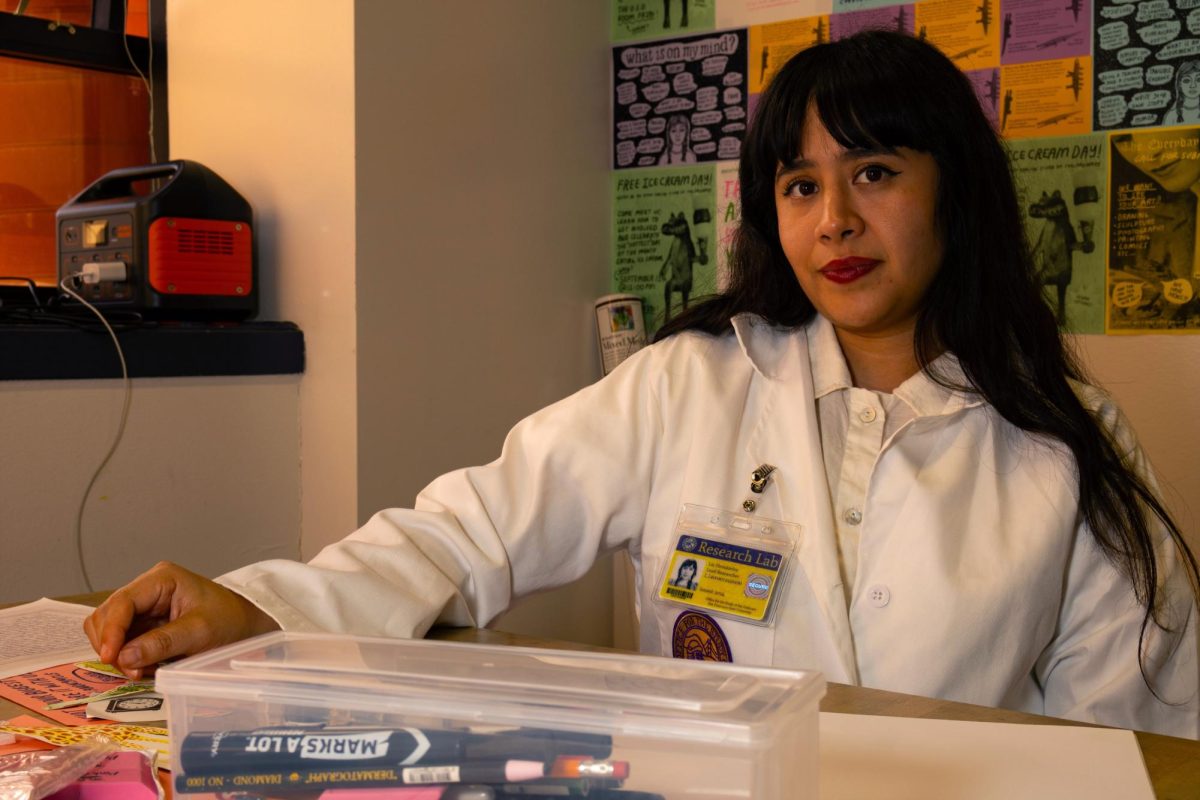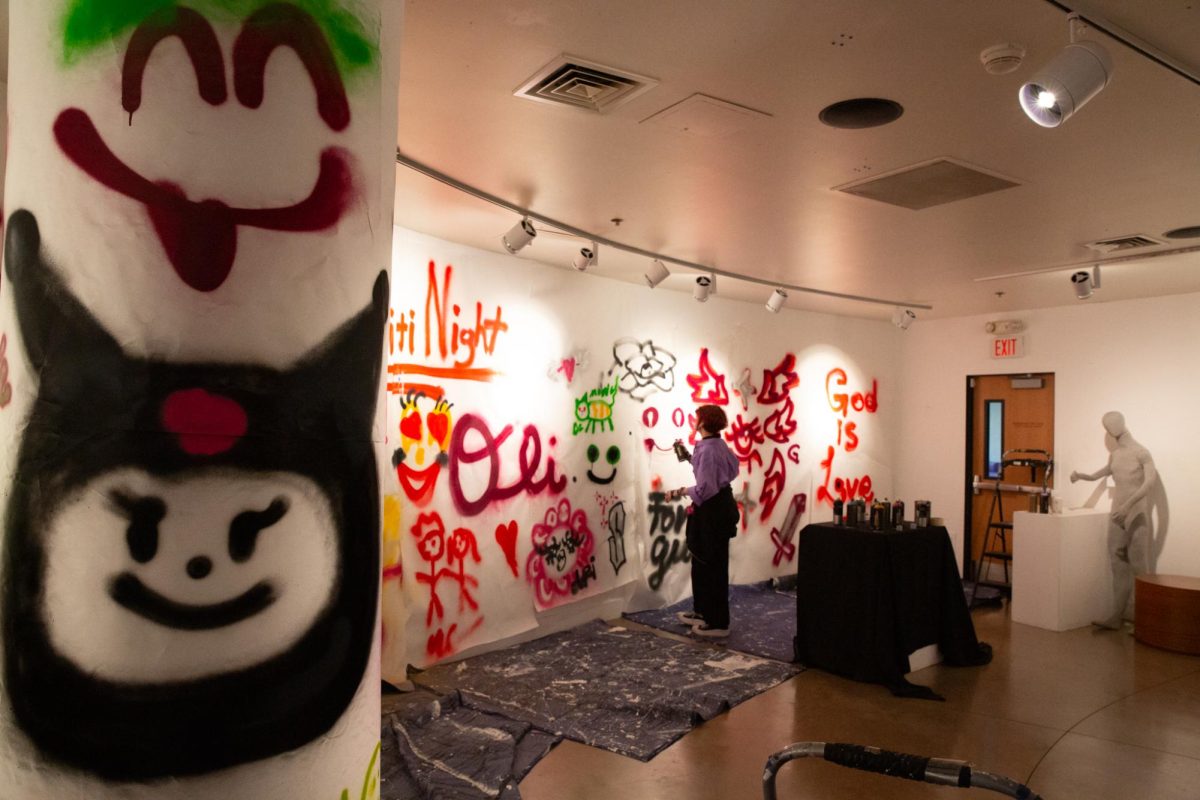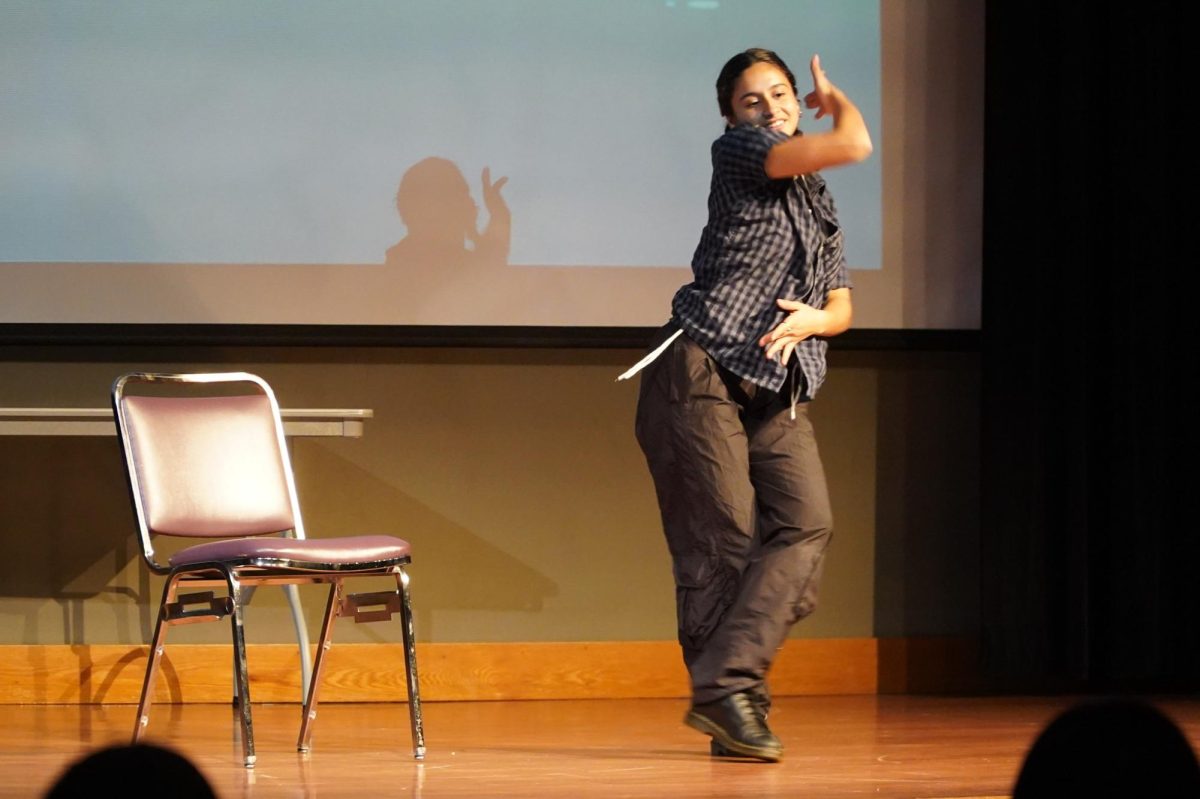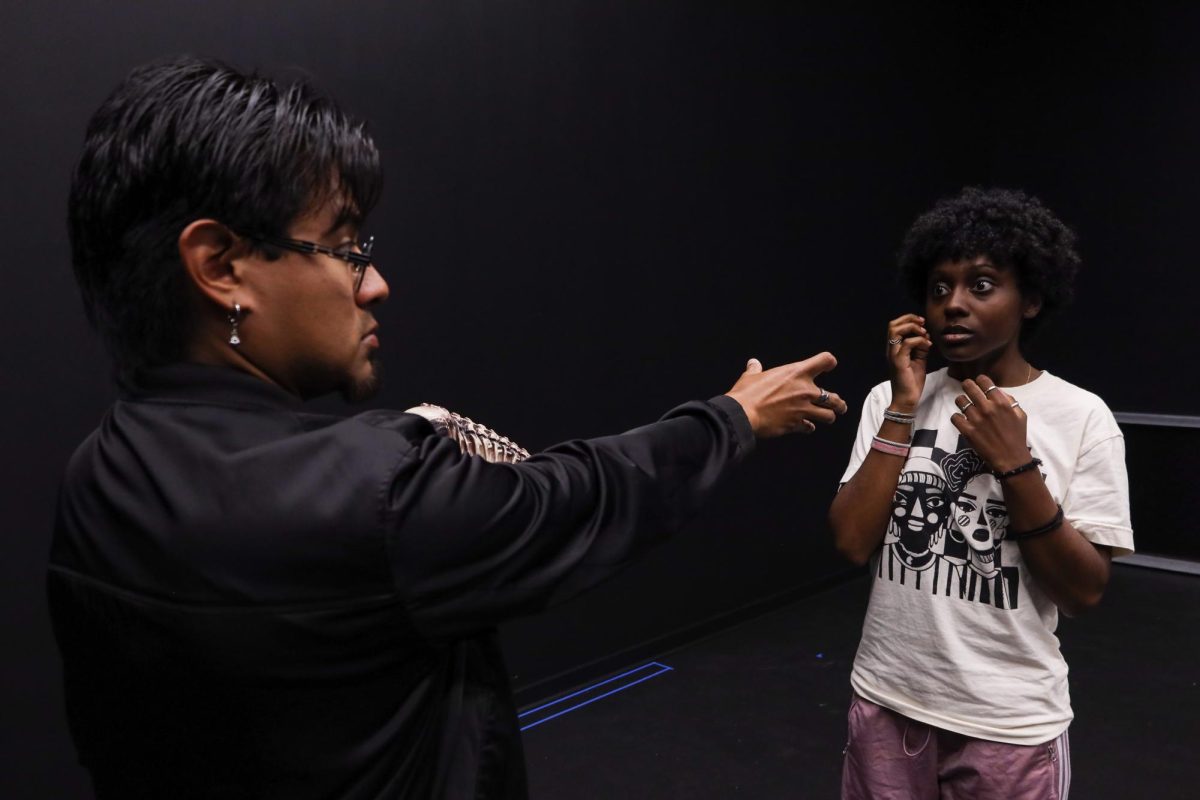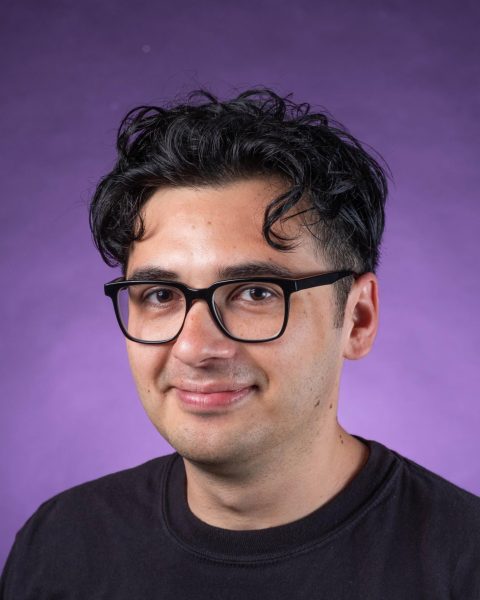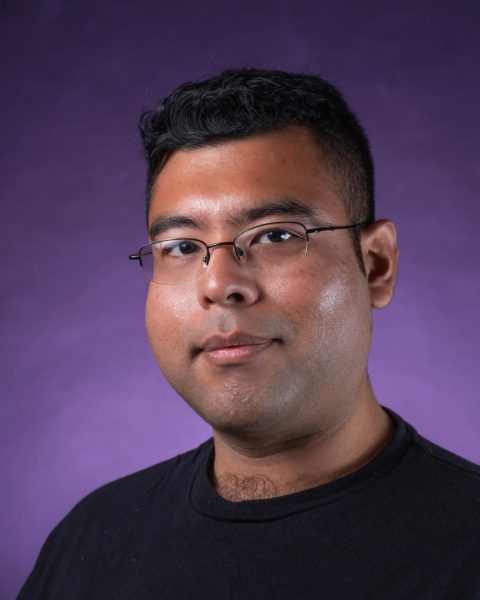On the wall of the second floor of the Fine Arts building is an altered version of the San Francisco State University logo. The Goddess of Wisdom, who typically holds a torch, instead holds a magnifying glass and examines a flower on the logo. The Office of the Study of the Ordinary is in Room 281.
The Office of the Study of the Ordinary, also known as OSO, is a project by Artist-in-Residence Liz Hernández. The project consists of several workshops led by Hernández, some individually and some in collaboration with classes, in which SFSU students create art that examines the minutiae of their day-to-day lives. The project will culminate in an exhibition in Spring 2025 that compiles all the art made in these workshops.
“I wanted to make a space where people could come in, see the things around them with a different set of eyes and make something with it,” Hernández said.
The OSO encourages students to reflect on their inner lives and to express those reflections in their artwork. Hernández instructs students to have fun with it, which translates to the project’s aesthetic, with hand-drawn flyers and often minimalist and mysterious messages.
Hernández’s stint as an Artist-in-Residence began in March where she spent most of the spring semester establishing her place on campus and learning about the school’s inner workings. From there, she began setting up art workshops at the OSO. Hernández provided students with materials to create personal art pieces, which have ranged from fake diplomas to life-sized self-portraits.
During the first workshop of the semester, students were asked to make a project called “National Biographic,” a satirized cover of National Geographic Magazine. The project was a collaboration with Daniela Tinoco, a Master of Fine Arts student at SFSU, who saw it as an opportunity to combat the concept of identity that dominant forces have created.
“I do many different things but everything is interested in identity, how to create identity away from national identities and how to create solidarity between people,” Tinoco said.
Students brought in archival photos of their family and used the images to examine the dynamics of their lineages’ stories.
“I like social practice because I believe that making art in this collaborative way helps people to create meaning in a collective way and helps us gain agency from these big power structures and oppression and concepts like the nation-state,” Tinoco said.
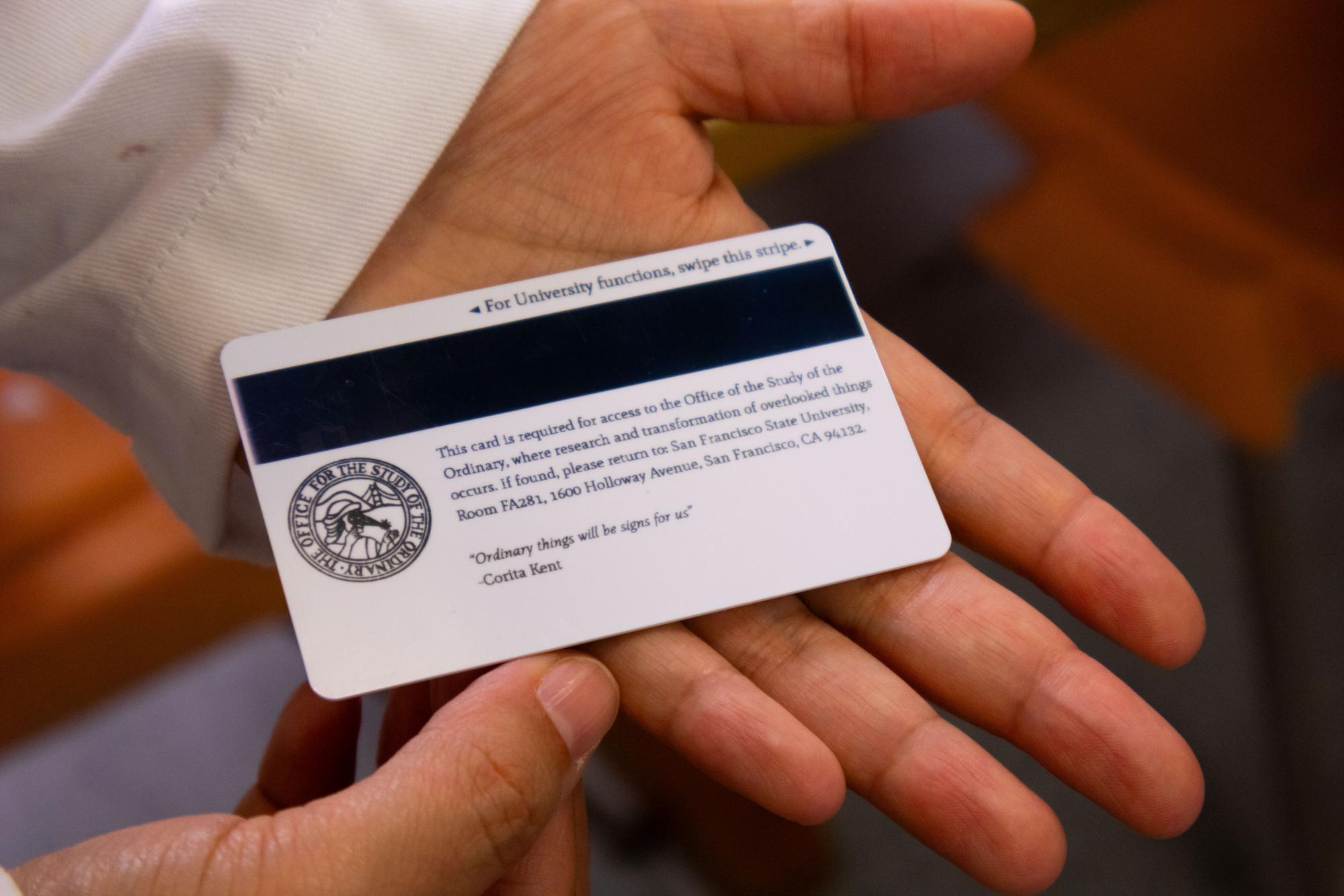
Hernández is the first Artist-in-Residence at SFSU. Originally from Mexico, she currently lives in Oakland. She is an alumna of California College of the Arts, where she studied industrial design and works with different mediums to create art heavily influenced by the literature of magical realism. For this project, she took that influence to create this fictional research office.
The project is set up to mimic and satirize the bureaucratic institution of universities. To successfully create the appearance of an official institution, Hernández provides lab coats and homemade ID cards to participants in the project. For these ID cards, Hernández asks students to bestow upon themselves a fictional title that represents what they aspire to be. She says the title of worker is banned because we will work our whole lives.
Hernández’s residency was made possible through SFSU’s reception of the Harker Fund, an award that provides schools with funds to host an artist-in-residence. This is the school’s first time receiving the grant. The decision to host Hernández was made by a coalition that included Sharon Bliss, the director of the Fine Arts Gallery, and Kevin Chen, the resident curator of the gallery.
“It seems like she was very interested to ground the project here,” Bliss said.
When deciding on the residency recipient, Bliss and a committee considered several criteria, including how the artist would represent and fit in with SFSU.
“This was really about involving students. Involving and exploring in different ways. What’s archived, what’s remembered and how is that recorded? And simultaneously challenging that. So it’s this critical thinking level that I think is part of all of our pedagogy here,” Bliss said.
She said that both Hernández’s involvement with students and her examination of the institution in place were factors in the decision. Throughout October, Hernández is focused on doing collaborative projects with classes in the Fine Arts department.
One of these projects took place in ART 345, Foundations in Ceramics, taught by Ilana Crispi. In the workshop, students were instructed to make a trophy to award to themselves. Hernández told students that these trophies can look like anything they want and can be awarded for anything they want. Students made trophies that were dedicated for sleeping through the night, for being the most tolerable roommate and for waking up in the morning.
“It feels out of the ordinary. There is something interesting about doing whatever you want that’s simple and mundane,” said Anette Bohaty, a studio arts student in the workshop.
The OSO’s final exhibition will take place in 2025, from Feb. 22 to April 5. Upcoming class collaborations include journal painting with Professor Chris Finley and papier-mâché sculptures of food and snacks with Associate Professor Libby Black.
“A big part of people come from families that didn’t have the chance to go to college, or for some of them they’re the first of their family who does that,” Hernández said. “I met people who were in the foster care system. It’s just very impressive that they feel comfortable to share with me. I had it so easy, so might as well just use my time here to elevate what they have to say. That’s what I am here for.”




